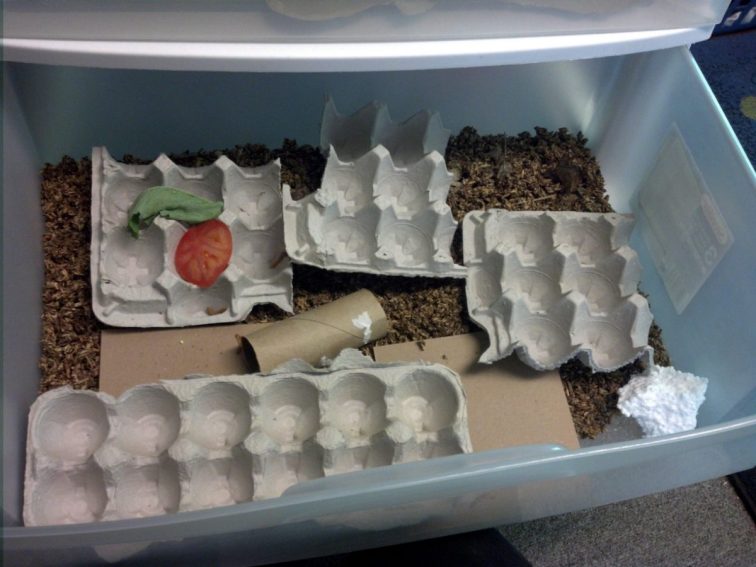My interest in sustainable food sources has led me into gardening a lot recently (more on that later), and as a companion to that project I’ve decided to build a mealworm farm. Mealworms are pretty fascinating creatures from a sustainability standpoint – they’re excellent at digesting food scraps and other plant matter into compostable material, they’re a great protein source for chickens as well as potentially for humans, and they have recently been discovered to have the fascinating ability to digest polystyrene.
With that in mind, I set out to determine a way to raise them. It seems that a lot of folks posting on the Internet have had success raising them in plastic containers, so I went with that option.

The worms need dry material to eat as well as moist plant matter, which also provides their source of moisture. I wanted to try and use only waste products for this farm, so the bin is filled with spent grain from a local brewery.

I added some styrofoam to the bin as well to see whether the worms would eat it. They seemed to explore the chunk of styrofoam a bit but didn’t eat any, perhaps because there were more nutritious things to eat.

After about a week and a half, some of the worms started to pupate and I moved those ones to a separate bin. This is recommended from what I’ve seen; it keeps adult mealworm beetles from preying on younger larvae.
We’ll see how well the farm turns out. I won’t be trying any culinary experiments with them yet but I won’t rule that out for the future. Although people in Western countries might balk at the idea of incorporating insects into their food, it’s relatively common in many other parts of the world. There’s an emerging market for them as a novelty snack item, and the Nordic Food Lab has done some interesting work trying to envision the role they might play in the fine dining of the future.
Will post more later!


Comments
No comments yet. Be the first to react!